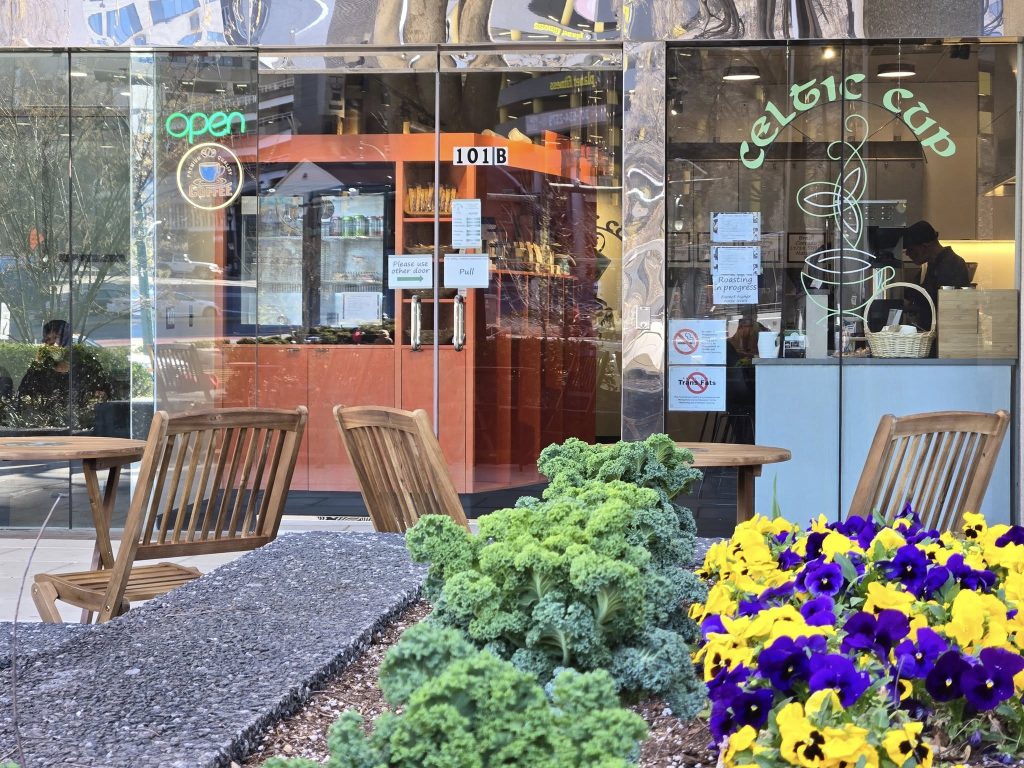History of the Celtic Cup Coffee name
The “Celtic” part of our company name is a reference to the fact that we, my wife and I, do Irish “set dancing” (or “square sets” if you’re actually from Ireland). Or, at least, we used to before the shop took up so much of our time!
The name is pronounced in the Latin way, with a hard c like /ˈkel.tɪk/. The other pronunciation with a soft c, /ˈsel.tɪk/, is reserved for a certain sports team.
The first time I made my home roasted coffee available to anyone outside of family and close friends was as a fundraiser for our dance club, the Greater Washington Ceili Club. I needed a name that fit the purpose and “Celtic Cup” came to mind – I’m a sucker for alliteration. My wife drew up a cute logo, featuring a traditional Celtic knot in the steam from a coffee cup. After that, it kinda just stuck.
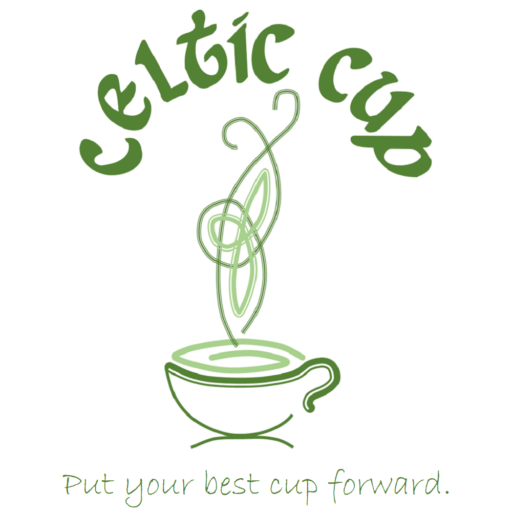
Shop design features
The shop is TINY! Celtic Cup pays rent on 585 square feet, but my tape measure shows it to be closer to 535. Because it’s so small, the usual “front of house” and “back of house” concepts almost don’t apply. About 120 sqft are taken up by a gender-neutral restroom, about 60 sqft make up the storage area behind a large cabinet (I guess that’s the “back of house”), about 140 sqft are used for work areas and counters (sort of “middle of the house”), and the rest is the customer area (“front of house”).
The main design goal was efficient operations. With a shop this small, you really have to pay attention to every detail. My architect, Michael Belisle, gets a lot of the credit for managing to fit everything needed into the available space. The biggest coup was using the large, custom-designed curved cabinet to create just enough “back room” area to allow storage space for supplies and retail stock, while also providing green coffee storage and retail display within the cabinet, itself.

The roasting and brewing space is set up kind of like an “open kitchen” concept. With the stainless steel storage hoppers and smoke hood being obvious visual features, they ended up setting a lot of the overall tone for the space. Michael’s design then maintained those clean lines, balancing them with the eye-catching nature of the custom designed storage cabinet in a brilliant vermillion.
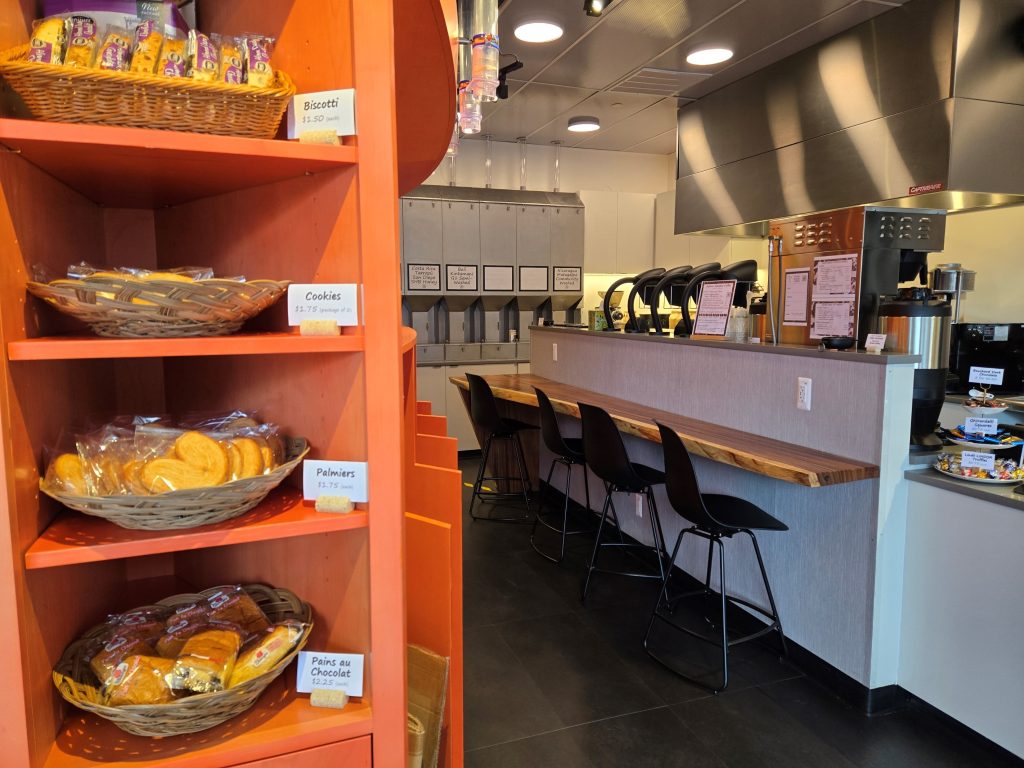
In between the two is a feature that I wanted to bring in from the very beginning… a live edge wood customer counter. The counter not only serves as our limited seating area but creates another link between the space and our coffee product – the wood is from a Guanacaste tree from Costa Rica’s sustainable forestry program. The counter and all the custom cabinetry were made by cabinet maker Joe Abernethy and his crew at Abernethy Sticks, with all the materials sourced through them as well.
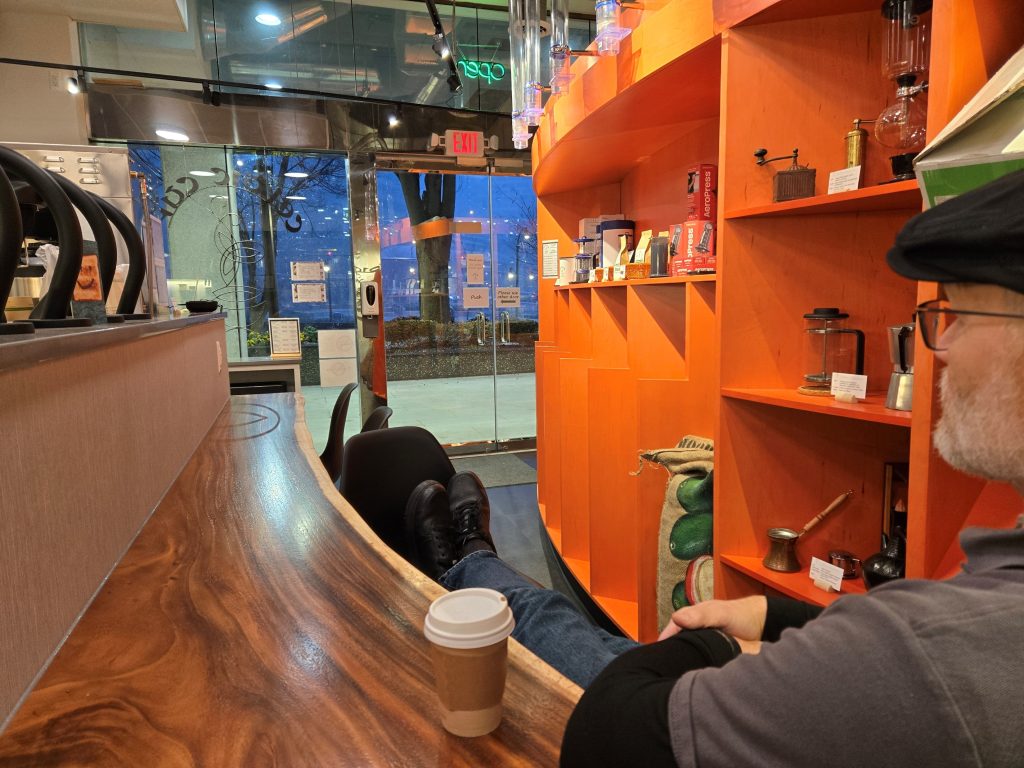
Almost nothing in the shop is unseen. Green coffee is stored in plain sight in the large, curved cabinet separating the customer area from the storage area. Up to 7 unopened full-size bags of coffee can be stored in a set of cubbies along the curved front of the cabinet, while up to 6 boxes of coffee (about 65 pounds each) can be kept on the shelves built into the curved front.
Once opened, green beans are lifted from the bag or the box into one of 6 ~200 pound capacity custom fabricated stainless steel storage hoppers at the back of the space (my own design and fabricated for Celtic Cup by Stromberg Metal Works) via a vacuum conveyor system (also of my design). Interested in seeing how it works? Check out this video of the system in action!
Once in the hoppers, the beans are gravity fed to scooping trays, where I can measure a portion of beans to be loaded into the roasters as needed.
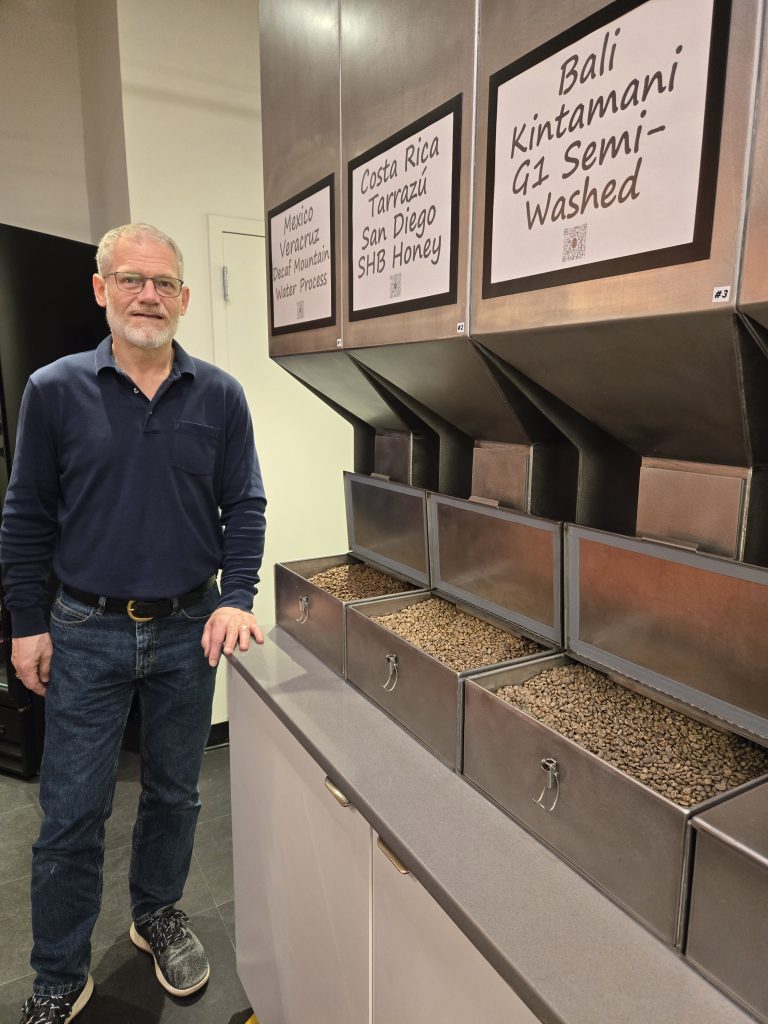
I have to add that dancing has brought many interesting people into our lives. One of our fellow dancers, a talented blacksmith and owner of Penguin Forge, very kindly worked with us to create two versions of our logo. We painted the larger of the two to standout in our front window. The smaller of the two hangs at the back of our shop – and, in the photo below, it almost seems like a shadow from the front window.
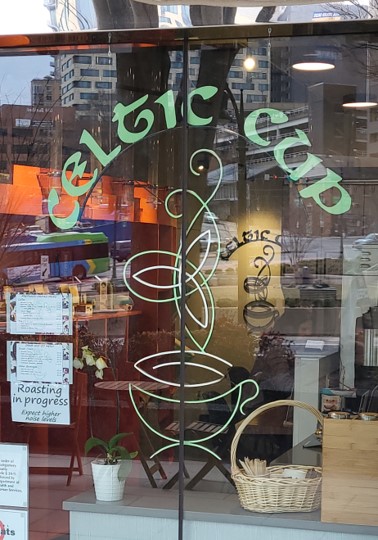
Weather permitting, Celtic Cup tries to make the most of our outdoor seating area. On a daily basis, we set up as many as five two-top café tables along the colonnade (the covered space) in front of the shop.
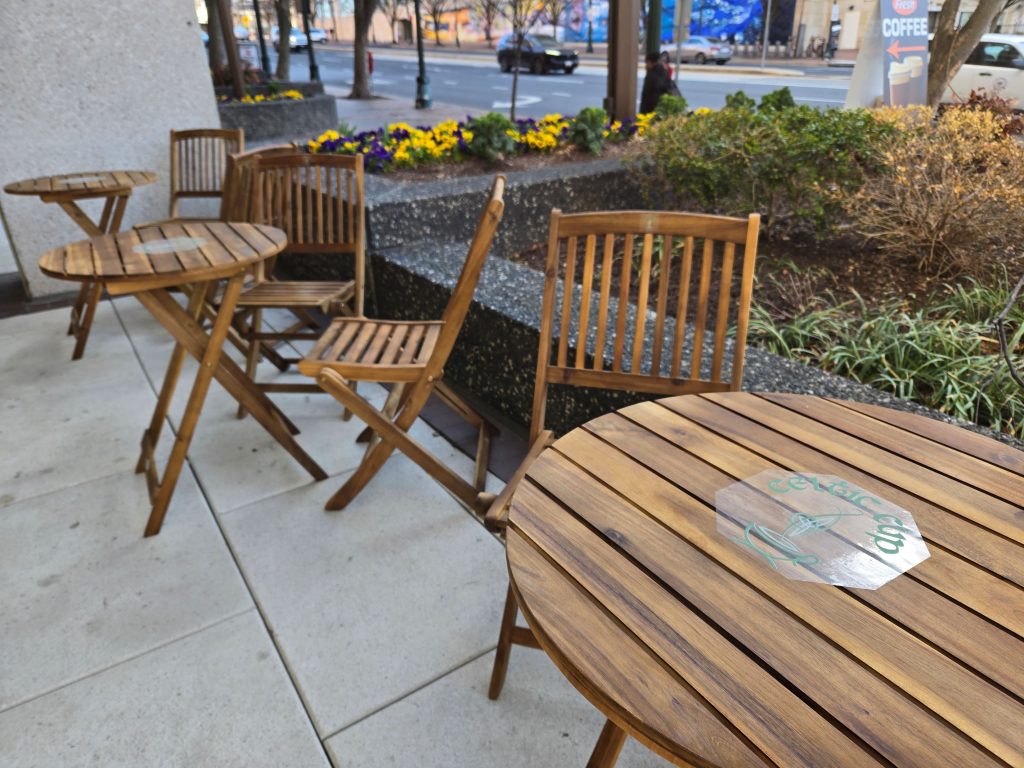
All coffees are roasted in house
Celtic Cup uses a battery of 4 hot air roasters from Sonofresco. Three of them produce a one-pound batch, while the fourth is a 2-pounder.

They all sit under a smoke hood that feeds into a smoke scrubber called a VortX EF-800, which removes almost all of the smoke particulates, while leaving the aroma of the roasting.
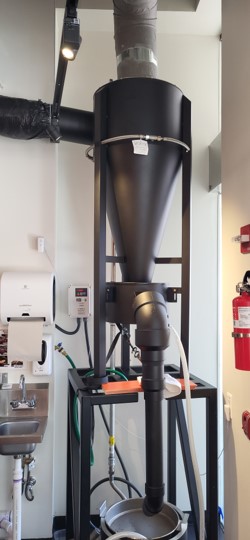
Coffees are only roasted onsite and in sight. It’s part of the show. We have a small wholesale presence, and are working to build this over time. Orders for wholesale customers are completed using the “big” 2-pound roaster.
As long as a customer has 20 minutes and there’s a free roaster, they can have their coffee roasted while they wait. Each roast is done to the exact roast level desired by the customer.
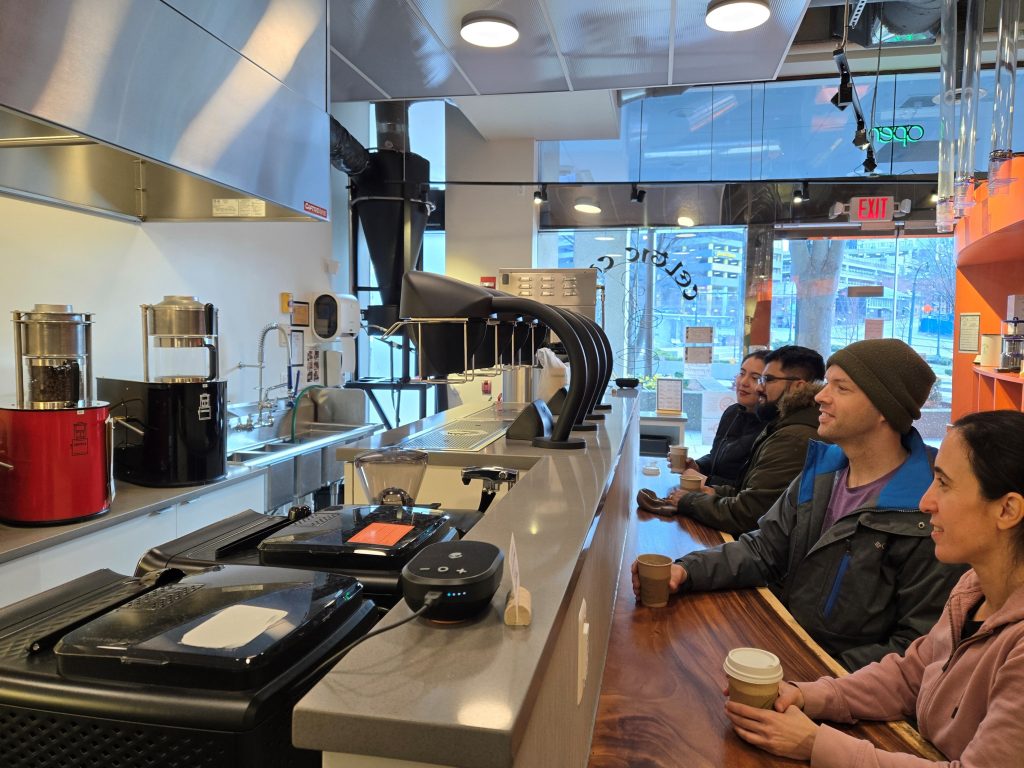
I have set up the roasters to have a resolution of 1 degree C on the final roast temperature. For a typical bean, that means that there are around 24 roast levels that I can hit pretty reliably. While that’s a lot of flexibility in roasting levels, many people just express a preference for light or medium or dark. A fair number of people will ask for an in-between stage like ‘medium-dark’. Only rarely does anyone go beyond that level of precision. But when they do, Celtic Cup is ready for them!
Geeking out about preparing coffees, too
Batch brewed coffee is made with a twin 1.5 gallon brewer from Curtis (G4TP2T10A3100). Celtic Cup has 4 servers, so that I can have light, medium, and dark roast coffees brewed and ready to serve (plus one for decaf on special occasions). Grinding for batch brewing is done with a Bunn 55600 shop grinder.

Many people haven’t had the opportunity to taste the same coffee bean roasted to different levels. To give more people a chance to experience the impact that different roast levels can make, Celtic Cup has recently started to “feature” a coffee bean each Saturday that we brewed at each of the 3 roast levels – light, medium, and dark. If people have the time, we encourage trying a vertical “tasting flight” with 3 ounces of coffee at each of the roast levels. I love hearing about new discoveries that people make as they experience the differences in taste!
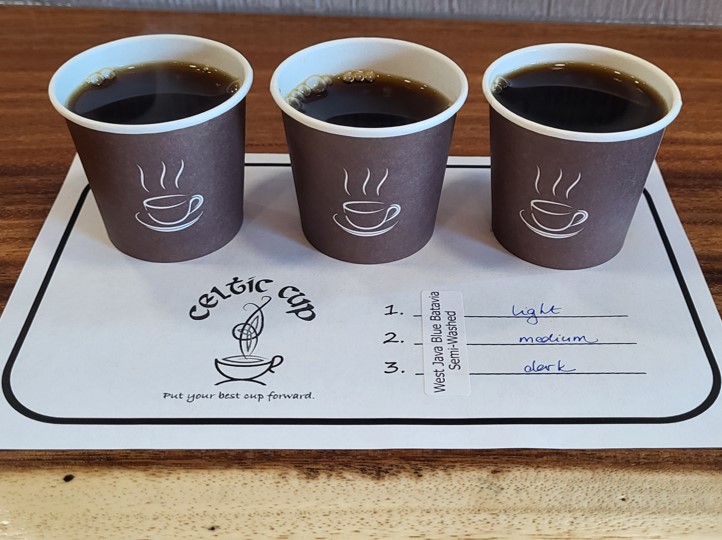
If you’d like something other than our selection of brewed coffees of the day, we can also offer customers an individually prepared cup of coffee as a pour over. We maintain a selection of coffee beans for our customers to choose from, so that you can select just about any roast level from light through dark (and sometimes with extra light and extra dark roasts available, too). Pour overs are made on 2 twin Curtis Seraphim brewers (4 heads, total). Grinding for pour overs uses a Baratza Sette 30.
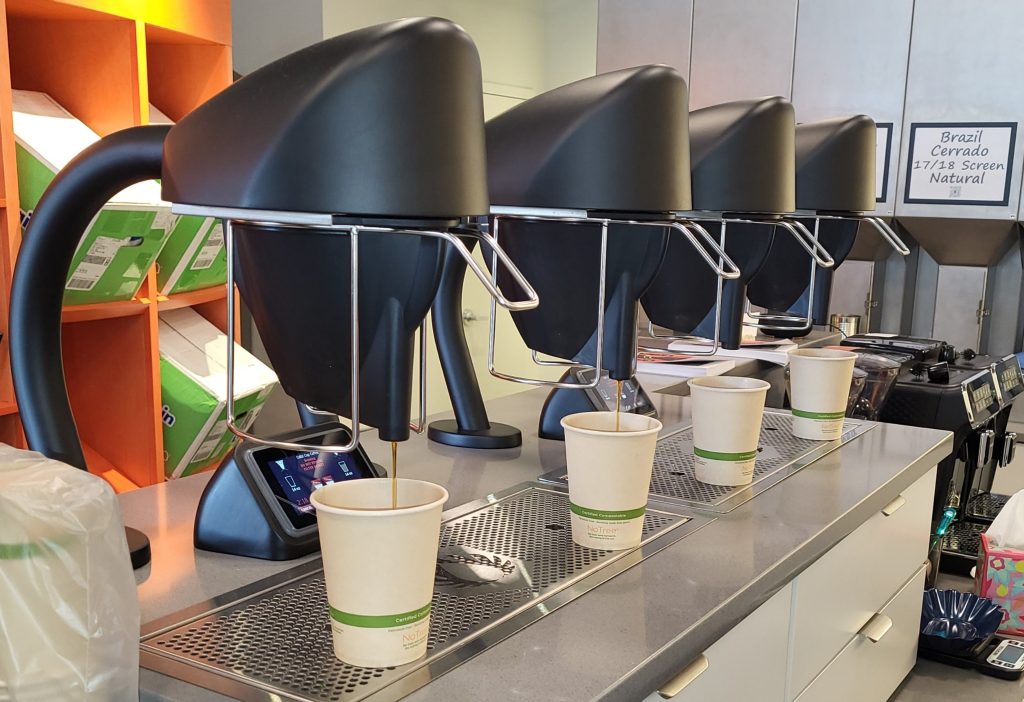
We also offer espresso and Americanos. Espresso is made using Philips 3300 super-auto machines. While these machines are capable of automatically making cappuccinos and lattes, we don’t currently offer any frothy milk drinks. Plain espresso fits well with the idea of a tasting room and it keeps Celtic Cup from having to upgrade the Food Service Facility license. Grinding for espresso is accomplished on a second Baratza Sette 30.
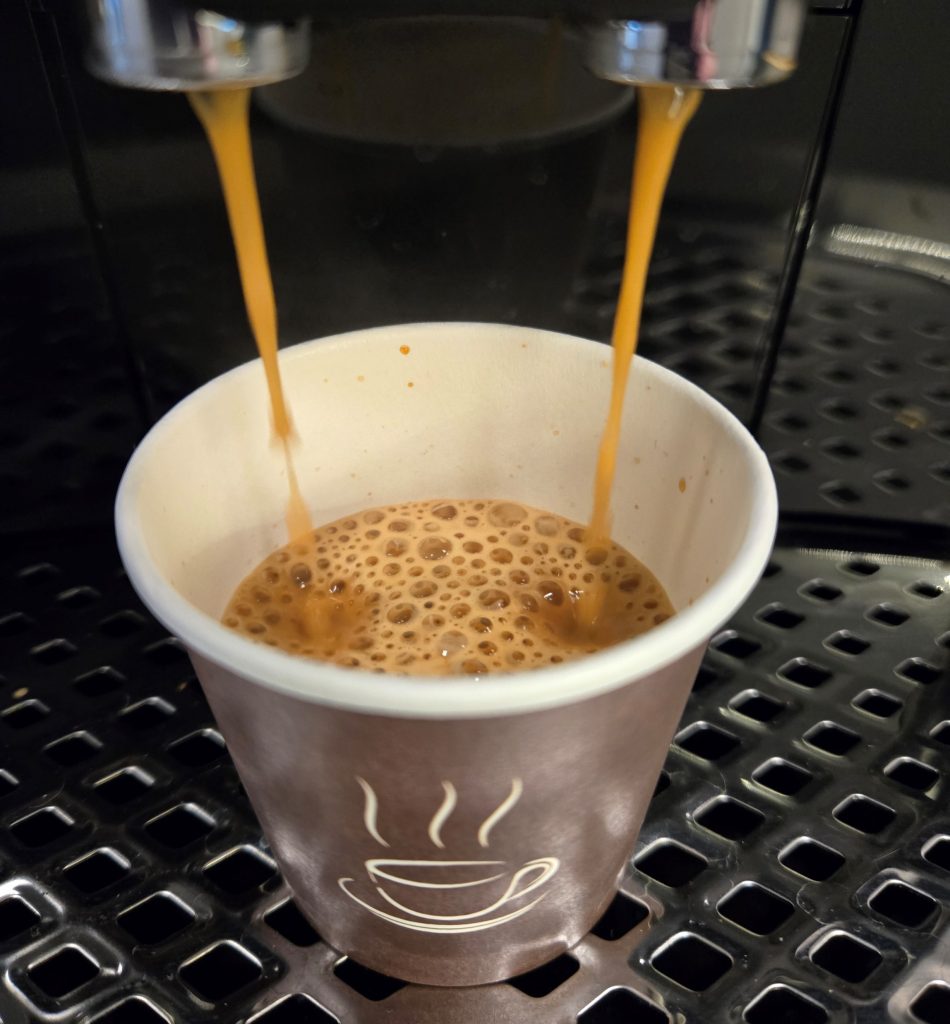
Of course, Celtic Cup also offers espresso flights, where customers can choose any three beans roasted to just about any level of roast. Some folks choose their own vertical tasting (same bean at different roast levels) while others choose their own horizontal tastings (different beans at the same roast levels).
Do you find parallels between the craft of roasting and your previous occupation as a computer scientist?
I’m asked this question more often than I ever expected I would be!
Most of the parallels that I can think of between roasting and computer science are indirect. There’s a focus on design and detail in computer programming that isn’t all that different from the heavy focus on design and detail that went into the buildout for the space, including the different parts that had to be custom designed and beta-tested prior to being placed into use. Also, since my shop is designed to be operated by a single person, I had to use all programmable machines that are as close to one-touch operation as possible.
But actually operating the shop feels completely (and mercifully) different from coding. After over 30 years sitting in front of a computer, I was ready to do something different – something that featured genuine human interaction. The shop environment provides a lot of opportunities for that. Whether it’s just a quick “good morning” and “have a nice day” or a longer discussion about coffee, travel, current events, or nothing in particular, I really enjoy spending time with my customers.
Come visit us soon!
